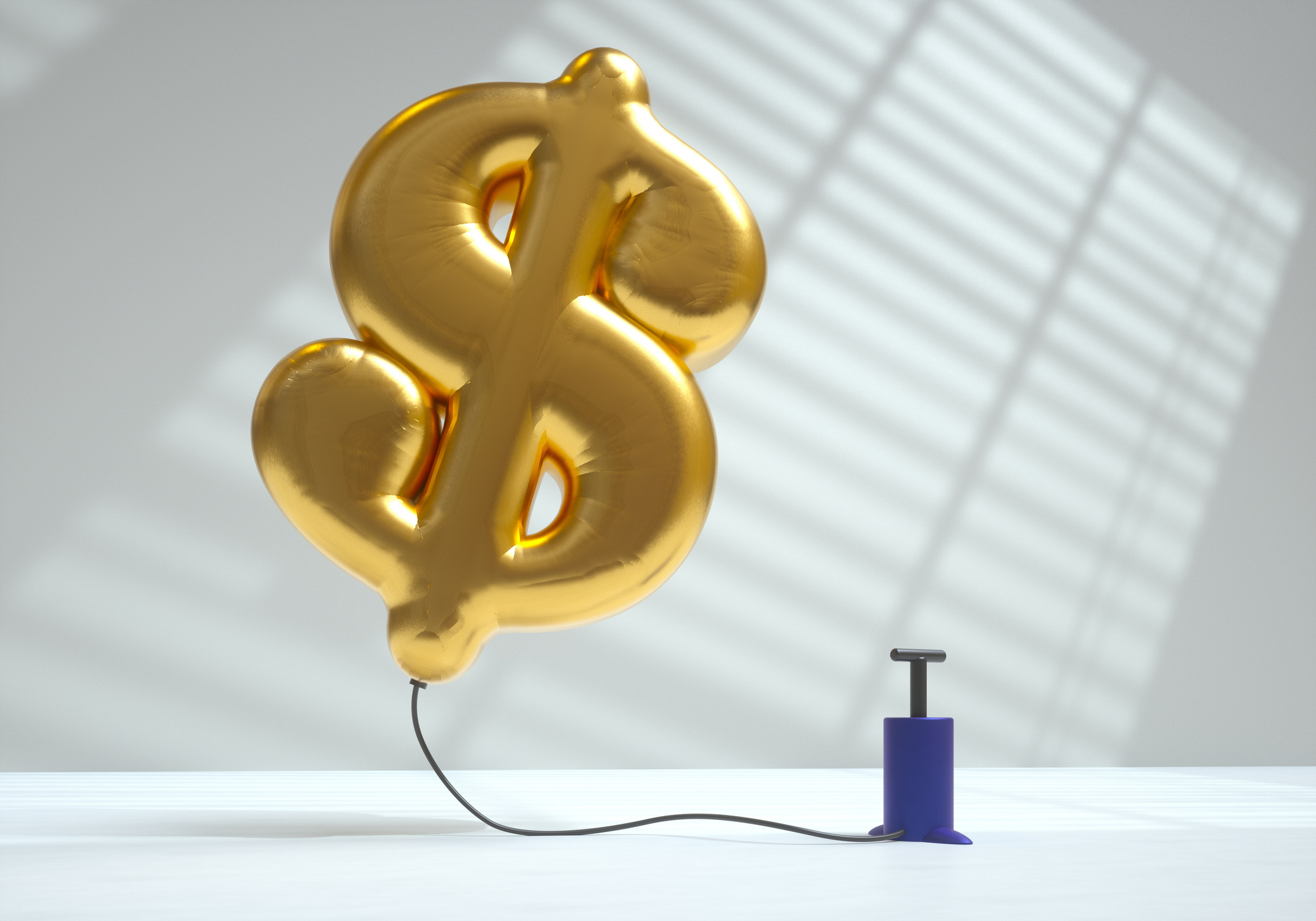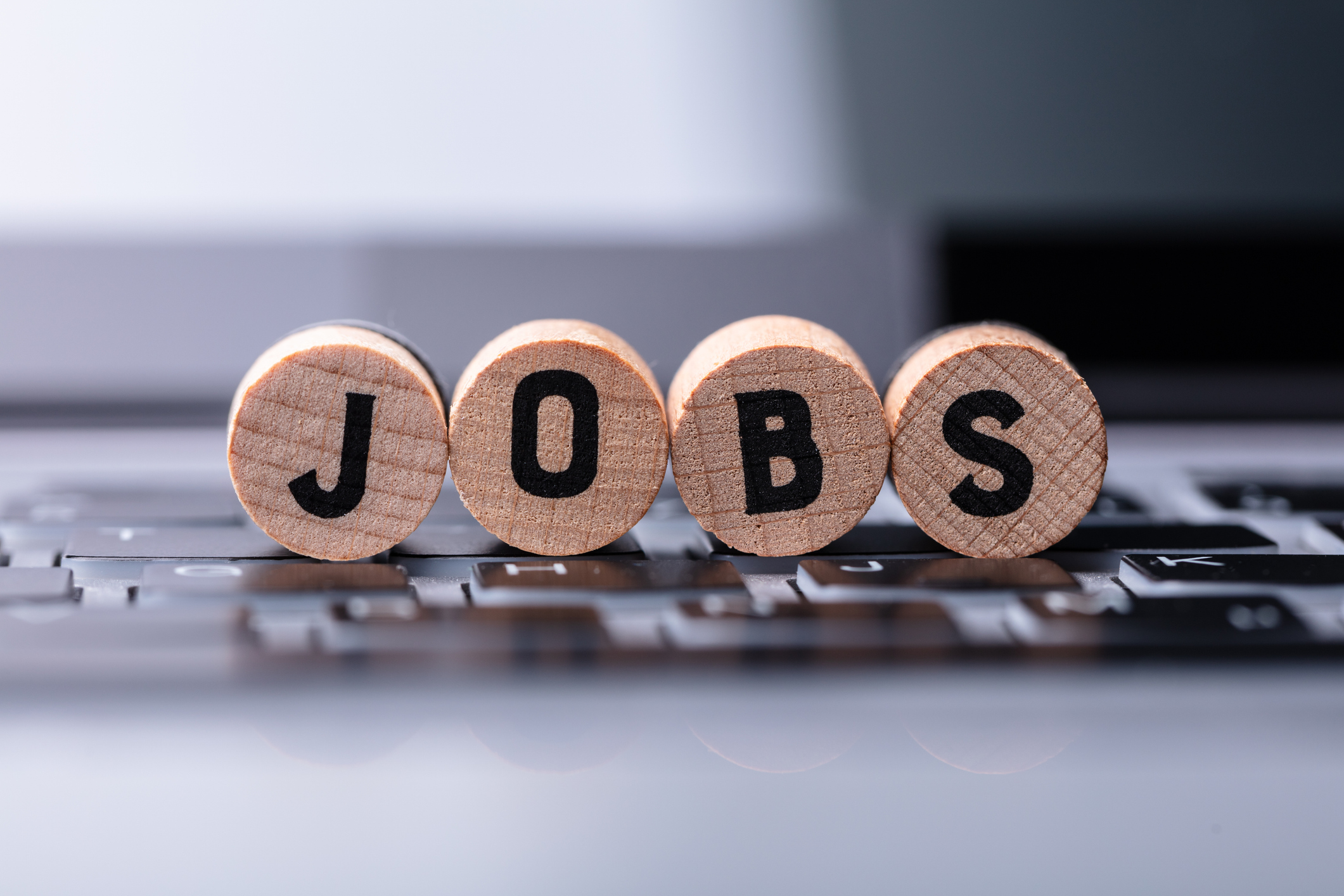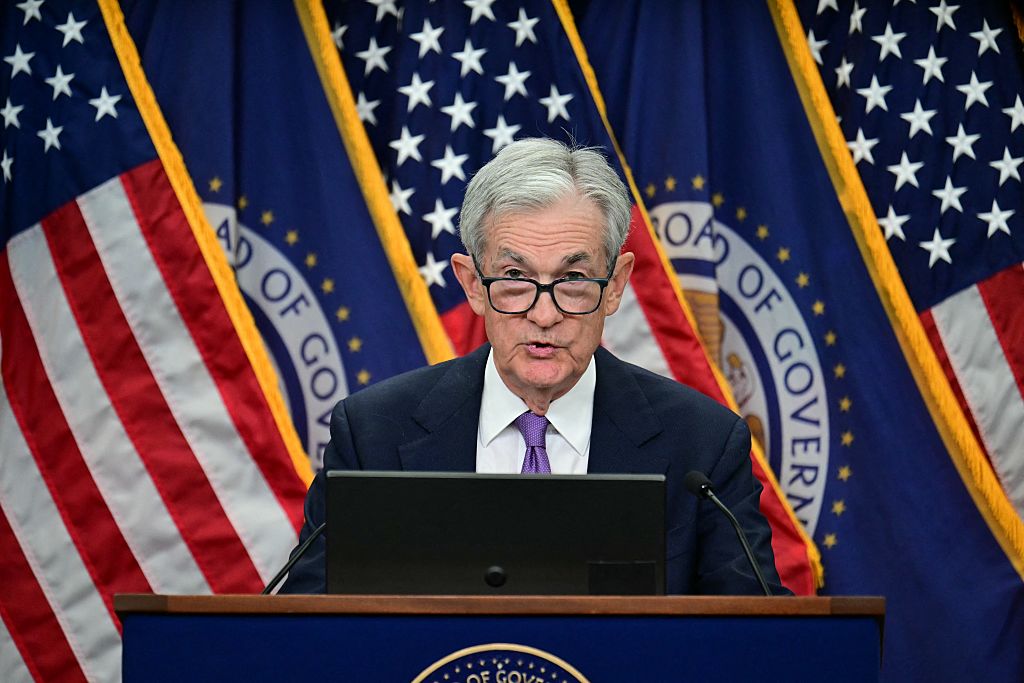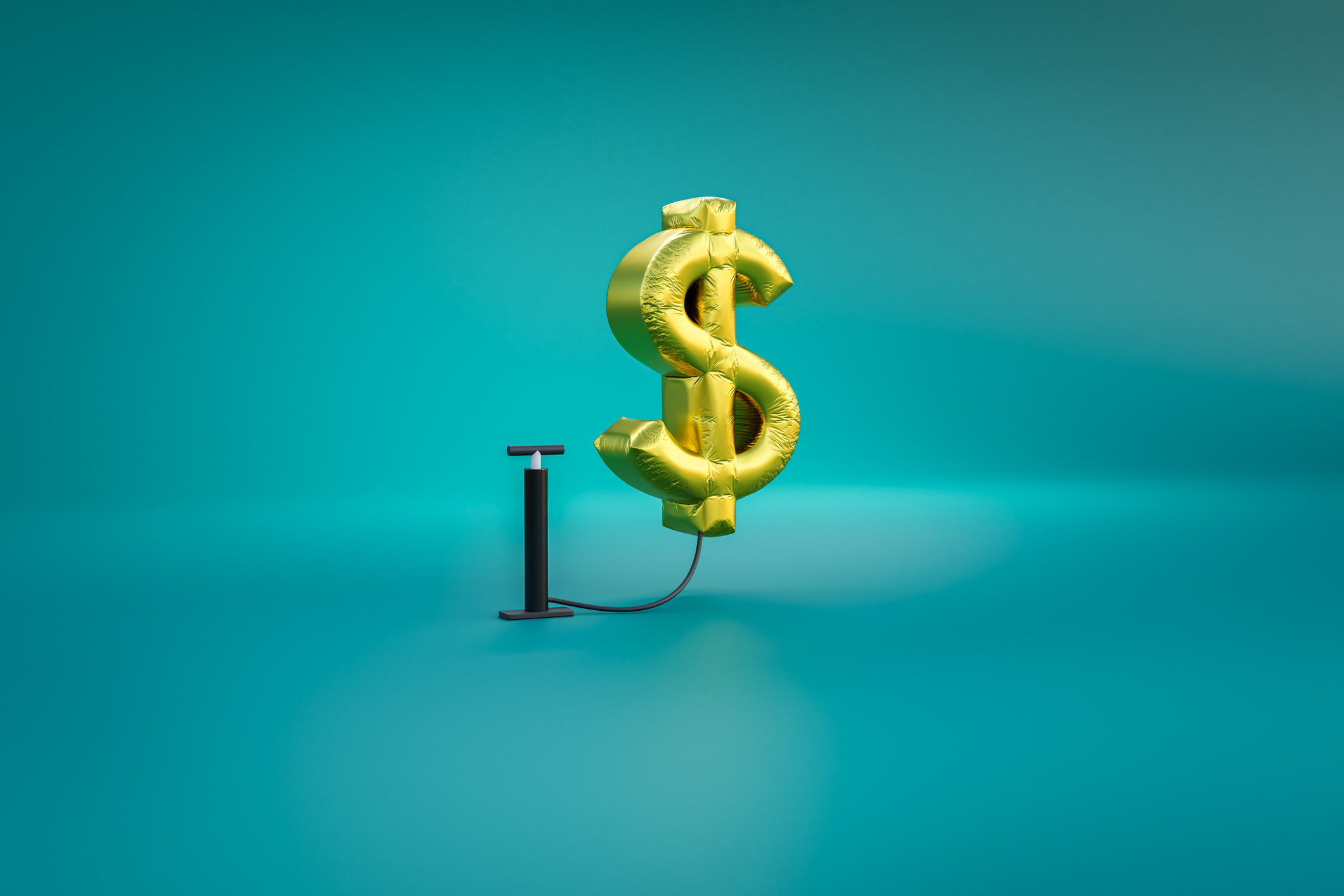37 Ways to Earn Up to 9% Yields on Your Money
Our field guide to income investments of varying dividend yields and interest rates identifies opportunities ranging from ordinary to downright exotic.

Early 2022 was a period most investors would prefer to forget. Stocks slumped, and the bond market suffered its worst rout in more than 40 years. There was no shortage of culprits: soaring energy prices, rising inflation, higher interest rates and new geopolitical risk in the form of the horrifying war in Ukraine.
Moreover, the Federal Reserve Board, which underestimated the extent of the inflation challenge, is swiftly pivoting to a hawkish monetary policy.
"The Fed is laughably far behind the curve," says Spenser Lerner, head of multi-asset solutions at Harbor Capital Advisors. He expects the central bank to jack up the federal funds rate (the rate that banks charge each other for overnight loans) from a current 0.25%-to-0.50% target range (as of mid-April) to at least 2.75% by 2023.
At the same time, the Fed will flip from the massive bond-buying program known as quantitative easing, which it favored during the COVID-era economy, to quantitative tightening. That means shrinking its bloated balance sheet by tens of billions of dollars each month by letting some of the bonds it holds mature without replacing them, or even selling them into the market.
How quickly central bankers can tame inflation – and whether they send the economy into a recession in the process – is a topic of lively debate.
Yet market turbulence has tossed up some interesting opportunities for income-starved investors. Particularly at the short end of the (remarkably flat) yield curve, yields are becoming respectable for the first time in at least a couple of years (interest rates on short-term IOUs have moved up briskly in anticipation of looming Fed rate hikes).
Weaker stock prices combined with strong corporate earnings and dividend increases have created some opportunities in income stocks. Shares of closed-end funds (CEFs) are selling at steeper discounts to the value of the assets in their portfolios, due to market volatility. Energy shortages and surging prices have made oil and gas pipelines – including master limited partnerships (MLPs) – a hot sector again.
Our guide will help you identify attractive income-producing investments in eight different categories, extending from fairly ordinary securities to ones that are more on the exotic side, with a range of risk levels and dividend yields/interest rates to match. Before you embark on your quest for income, keep a few considerations in mind. Prior to investing, you should have a plan in place that stipulates appropriate long-term portfolio allocations. Everyone's situation is different, but generally you should ensure that you have enough cash or cash equivalents on hand to cover at least six months to a year of living expenses before investing in risky assets such as stocks and high-yield bonds.
Prices, yields and other data are through April 8. But be aware that because of the rapid increase in rates this year, yields – particularly for bond funds – are a fast-moving target.

Short-Term Cash Investments: 0%-2%
Yields on short-term, fixed-income accounts and securities follow the Fed's short-term interest rate. That means yields available on CDs, bank savings, money market accounts and short-term Treasuries have moved off the floor and are rising.
The risks: In today's inflationary environment, money you hold in cash reserves and other liquid assets loses purchasing power. Consumer price inflation is above 8%, and the bond market projects an inflation rate of nearly 5% over the next year (as inferred from the difference between inflation-protected and nominal Treasury yields). Safe cash equivalents are needed for emergency reserves and to meet short-term liabilities such as taxes or tuition payments, but this is a time to assess whether you’re socking away too much cash.
How to invest: The good news is that yields available from short-term accounts such as money market funds should keep rising this year. "There will be a world of opportunity in short-term assets as the Fed hikes rates," says Andy Kapyrin, co-chief investment officer at RegentAtlantic. In anticipation of higher yields down the road, you might consider keeping maturities short on CDs and durations (a measure of interest-rate sensitivity) low on bonds, rolling over the proceeds as they mature into (presumably) higher-yielding instruments.
The yield on the Vanguard Federal Money Market Fund (VMFXX, yield 0.19%) should rise steadily this year, partly because there is a time lag between Fed moves and yield moves in a money market portfolio. FDIC-insured Bask Bank offers a 0.80% annual rate with no account minimum. Marcus by Goldman Sachs pays 1.1% on a 10-month CD with a minimum deposit of $500.
You can do better with ostensibly risk-free short-term Treasuries because the Treasury market has already priced in numerous Fed interest rate hikes over the next year. For instance, six-month T-bills yield 1.1%, one-year bills offer 1.7% and two-year Treasuries yield 2.5%. (A year ago, Treasuries at all three of these maturities offered virtually no interest at all.) You can purchase newly issued paper at Treasurydirect.gov with a minimum investment of just $100.
If you prefer funds, the Vanguard Ultra-Short Bond ETF (VUSB, $49, 1.8%) is an exchange-traded fund that invests in investment-grade (mostly corporate) bonds. It has a duration of 1, which implies a loss of roughly 1% if interest rates move up one percentage point. (Prices and yields generally move in opposite directions.) The Vanguard Short-Term Treasury Index Fund (VGSH, $59, 2.1%), with a duration of 2, has no credit risk but more interest rate risk. Note that you can lose money in bond funds such as these because net asset values fluctuate with changes in bond prices.

Municipal Bonds: 2%
The principal attraction of muni bonds, which are issued by state and local governments in the U.S., is that interest income is free from federal taxes – and for bonds issued in your state of residence, free from state and local taxes as well. Interest rates tend to follow movements in the Treasury market.
"Yields have really come up in short-term munis this year in anticipation of Fed rate hikes," says Dan Genter, president of RNC Genter Capital Management. For instance, in the first quarter of 2022, the yields of five- and 10-year munis jumped nearly a full percentage point (a huge move in that short a time frame), according to Jim Colby, a muni bond manager and strategist at fund firm VanEck.
The risks: As with Treasuries, investment-grade munis (there is also a high-yield muni market) are high-duration bonds that are particularly sensitive to interest-rate movements. Unlike Treasuries, munis also have credit risk – the risk of default. But state and local governments are currently in sturdy fiscal condition thanks to healthy tax revenues and stimulus payments from the federal government during the pandemic economy. "Muni finances are in an exceptionally strong position, so credits are very strong," says David Dowden, a muni fund manager at MacKay Shields.
How to invest: Bond analysts like to compare muni yields to yields of Treasuries of the same maturity to assess relative value. Colby observes that on only a handful of occasions over the past 20 years did the ratio of 10-year muni yields to 10-year Treasury yields surpass 90%. Each time it occurred it was a strong buy signal, he says. Recently, the ratio was 85% and trending higher. Of course, the attractiveness of munis also hinges on your tax bracket.
National muni funds provide investors with well-diversified baskets of state and local credit from around the country. The Fidelity Intermediate Municipal Income Fund (FLTMX, 1.8%) is a member of the Kiplinger 25, the list of our favorite actively managed no-load funds. Adjusted for the maximum federal tax rate of 37% plus the 3.8% Medicare surtax on net investment income, the fund's tax-equivalent yield is 3.0%. More than 80% of holdings are rated A or higher; the largest sector is healthcare, and the two biggest state exposures are Texas and Illinois.
Particularly with rates so low (but rising), investing in a low-cost index fund makes sense. The Vanguard Tax-Exempt Bond Index Fund (VTEB, $51, 2.2%), an ETF with an expense ratio of just 0.05%, provides access to a portfolio of more than 6,000 bonds, more than 90% of them rated A or higher. The tax-equivalent yield for people in the highest tax bracket is 3.7%. The iShares National Muni Bond ETF (MUB, $108, 2.1%) has performed slightly better than the Vanguard ETF over the past three years but has the highest duration (5.4) of the three muni funds. Its tax-equivalent yield is 3.5%. As with the Vanguard fund, about 40% of assets are in New York and California paper.

Investment-Grade Bonds: 1%-7%
The core of a typical fixed-income portfolio is made up of investment-grade bonds issued by the U.S. Treasury, government agencies (mortgage-backed securities, for example) and corporations. In normal times, these assets provide income without large price fluctuations and complement more-volatile holdings, such as stocks.
But this year, with inflation and interest rates on the march, has been anything but normal. In the first quarter of 2022, the benchmark Bloomberg U.S. Aggregate Bond index slumped 6%, its worst quarter since 1980.
The good news is that with higher rates, high-quality bonds are becoming more attractive.
"The worst may be behind us," says Jeff Sherman, deputy chief investment officer at DoubleLine. Bill Merz, head of fixed-income research at U.S. Bank Wealth Management, notes that Agg index yields have jumped about 1.5% this year. "Core bonds become more compelling as yields rise and bond prices fall," he says. "The magnitude of change in recent months creates more opportunities due to the higher yields, which translates to higher current income."
The risks: As demonstrated in this year's miserable first quarter, bonds are subject to interest rate risk. Unlike Treasuries, corporate and consumer loans also face credit risk, but the news on this front is currently good. "Corporate earnings are strong, leverage is down, defaults are almost nonexistent, there are more upgrades than downgrades and, lastly, the consumer is in good shape," says David Albrycht, chief investment officer of Newfleet Asset Management.
How to invest: How does a 7.1% yield on a risk-free Treasury sound? That’s what Series I Savings Bonds paid through April, and that's likely to increase a point or two after May's semi-annual adjustment for inflation. But there’s a catch for I bonds, which may be purchased online through Treasurydirect.gov: You can only buy $10,000 of them per person per year. You need to hold them for at least one year, and if you sell within five years, you forfeit three months' worth of interest. Still, if I bonds aren’t a free lunch then they're at least a free breakfast.
For something plain vanilla, consider the Vanguard Short-Term Bond Index Fund (VBIRX, 2.5%), which holds a basket of thousands of bonds issued by the U.S. government (about two-thirds of holdings) and investment-grade corporations. Nearly all the bonds have maturities of from one to five years, and the fund’s duration is 2.7. High-quality bonds such as these generally play an important diversifying role in a portfolio in the event of stock market volatility.
The DoubleLine Core Fixed Income Fund (DLFNX, 2.9%) has a higher duration (5.2) and is opportunistic about investing across a broad spectrum of fixed-income sectors while managing risk. "We think a lot of the rate movement is behind us, so we've increased allocation to investment-grade corporate bonds for the first time in two years," says DoubleLine’s Sherman, who comanages Core with bond maven Jeff Gundlach.
Finally, if you like the idea of buying corporate bonds, particularly because credit quality is currently strong, but fear the price impact of rising interest rates, there's a possible solution for you: The ProShares Investment Grade Interest Rate Hedged ETF (IGHG, $72, 3.5%). The fund holds a basket of hundreds of bonds and targets zero interest rate risk by holding short positions on Treasury futures at three points on the yield curve, according to Simeon Hyman, global investment strategist for ProShares.

Real Estate Investment Trusts: 3%-5%
Because real estate investment trusts (REITs) are required to dis-tribute at least 90% of their taxable income each year, they offer relatively high dividend yields. REITs tend to move out of sync with both stocks and bonds, so they add diversification to an investment portfolio. And REIT operators can jack up rents, which makes these hard-asset businesses a strong inflation hedge in environments of rising consumer prices, such as we are experiencing now.
The risks: REITs sometimes struggle in periods of rising interest rates, partly because some investors view them as bond proxies, and the bond market itself is becoming more attractive as bond yields increase. Some parts of the sector are facing challenges beyond the next rate cycle. With the rise of remote and hybrid workers, the demand for office space, for example, may be in secular decline.
How to invest: A combination of rapidly rising prices and short supply of single-family residences is forcing people to rent. "Homeownership is unaffordable for many people, and demand for apartment rentals is through the roof," says David Kirshenbaum, assistant manager of Baron Real Estate Income Fund. Apartment leases tend to be annual, which allows landlords to raise rents with inflation each year.
Kirshenbaum is particularly drawn to two multifamily apartment REITs: Equity Residential (EQR, $92, 2.7%) and AvalonBay Communities (AVB, $250, 2.6%). Equity is the largest apartment REIT, with 80,000 units in more than 300 properties, mainly in coastal cities including New York and San Francisco. AvalonBay is a similar firm, but it's more active in property development than Equity, he says.
For higher dividend yields, consider Simon Property Group (SPG, $127, 5.2%), the nation's largest shopping-mall owner. Simon faces e-commerce headwinds, but many shoppers are returning to the mall. Investment research firm CFRA projects that occupancy in Simon's malls will rebound to pre-COVID levels within a year.
The REIT universe incorporates many subsectors, such as cell towers, industrial space, data centers and medical properties. The Vanguard Real Estate Index Fund (VNQ, $110, 2.8%) provides low-cost access to a diversified basket of 166 securities. Top holdings are Prologis (PLD) – warehouses and industrial real estate – and American Tower (AMT), wireless-communications infrastructure.

High-Yield Bonds: 3%-6%
High-yield bonds, also known as junk bonds, are issued by sub-investment-grade companies. For lending to these higher-risk firms, investors are compensated with higher yields than investment-grade bonds pay.
Junk-bond durations are considerably lower than those of investment-grade bonds of like maturity, yet the asset class was also whacked in the first few months of 2022 when it was hit by a double-whammy: rising interest rates and a widening spread between Treasury and junk-bond yields as risk-averse investors favored safer plays.
The risks: The higher risk of default is usually a chief concern. But Ray Kennedy, comanager of Hotchkis & Wiley High Yield Fund, thinks the default rate this year will remain low – about 2% instead of the historical average of 4% to 5%. That's because of a growing economy, better credit quality and a bit of a tailwind from the debt-deflating quality of inflation – that is, companies can pay off loans with dollars that are worth less than the amount originally borrowed.
Newfleet's Albrycht notes how some former "fallen angels" (credits that descend from an investment-grade rating to a junk rating), such as Ford (F) and Occidental Petroleum (OXY), now have the potential to be "rising stars" that regain investment-grade status thanks to improved balance sheets and cash flows.
How to invest: In making portfolio allocations, keep in mind that junk bonds tend to move more in sync with stocks than with Treasuries. Therefore, in most cases these high-yielders should probably represent only a minority of your fixed-income holdings.
The PGIM High Yield Fund (PHYZX, 5.6%), with a duration of 4.3, controls risk by focusing on higher-rated junk (BB and B, the two highest credit rungs on the high-yield ladder). The fund's performance ranked in the top 10% of high-yield funds over the past five- and 10-year periods.
The Osterweis Strategic Income Fund (OSTIX, 4.1%) keeps durations "short, due to our risk-averse nature," says Carl Kaufman, who has piloted the fund since 2002. The current duration is 2.7. Performing well in down markets, such as the first quarter of this year, is "the hallmark of our strategy,”"he says. In his 20 years at the helm, Strategic Income, which generates a high risk-adjusted return, has lost money in only three years, and its portfolio has suffered only a handful of junk-bond defaults.
One way to hedge against rising interest rates is with a bank-loan fund such as the T. Rowe Price Floating Rate Fund (PRFRX, 3.4%), a member of the Kiplinger 25. The fund invests in debt issued by banks and other financial firms to companies with credit ratings that are below investment grade. Interest rates on the loans are typically adjusted every three months in line with a short-term benchmark. Thus, if rates rise, investors earn a higher yield on the loans.

Dividend Stocks: 3%-6%
Dividend-paying stocks play an important income role in a diversified portfolio. Unlike fixed-income investments such as Treasuries and corporate bonds, healthy corporations can boost dividend distributions each year, helping to maintain the purchasing power of a long-term portfolio.
That trait is particularly important in today's high-inflation environment. "There is no better defense against inflation than dividend increases," say Hyman, the ProShares strategist.
The risks: Dividend yields available on stocks today are often higher than on the bonds of the same corporations, but stocks are much more volatile than high-quality investment-grade bonds and would suffer more in a recession.
Hyman, who calls growing dividends a "bulwark against inflation," cautions investors against simply reaching for the highest yields, without growth. "High dividend-yielders often get hammered like bonds in rising-rate environments," he says.
How to invest: Most high-yielding companies are found among bargain-priced stocks, which tend to be more resistant than growth stocks to rising interest rates. Energy is a natural place to look. Not only is the industry enjoying a windfall from rising oil and gas prices, but as Andy Kapyrin of RegentAtlantic notes, the companies have become far more disciplined with capital expenditures and, flush with rising cash flows, are able to boost dividend payouts.
Michael Cuggino, manager of Permanent Portfolio Fund, favors exploration-and-production companies for their direct exposure to the price of oil and natural gas. "As much as we would all like to transition to green energy as quickly as possible, that transition will be gradual," he says.
One stock he likes is Devon Energy (DVN, $62, 6.4%), whose production is mainly domestic. The two largest U.S. oil giants, Exxon Mobil (XOM, $87, 4.1%) and Chevron (CVX, $170, 3.3%), operate globally and have extensive refining operations. Or you can spread your bets by buying the Energy Select Sector SPDR ETF (XLE, $80, 3.3%), an exchange-traded fund that tracks an energy index.
Banks, which lend long term and borrow short term, can increase earnings through wider interest-rate margins on what they charge on loans compared with what they pay on deposits.
"Financials are the only sector that directly benefits from interest rates going up," says Alex Seleznev, director of wealth management and financial planning services at Councilor, Buchanan & Mitchell. John Buckingham, editor of The Prudent Speculator, spots value in JPMorgan Chase (JPM, $133, 3.0%), one of the world's largest and best-managed banks, and Morgan Stanley (MS, $83, 3.3%), a premier investment bank with global operations and a big wealth-management arm. Both banks are stellar dividend growers, having at least doubled quarterly dividends over the past five years.
Finally, for the sake of higher dividend yields and portfolio diversification, it also makes sense to look overseas for income. Lew Altfest, chief investment officer of Altfest Personal Wealth Management, has two intriguing ideas: The Vanguard FTSE Europe ETF (VGK, $62, 3.1%), which tracks an index of blue-chip European companies including Nestlé (NSRGY) and Shell (SHEL) and offers a yield more than twice that of the S&P 500 index, and the Lazard Global Listed Infrastructure Portfolio (GLIFX, 5.3%), an actively managed fund that features low volatility and has a principal goal of generating returns that exceed inflation.

Midstream Energy Infrastructure: 5%-6%
Midstream companies are engaged in the processing, storage and transportation of oil and natural gas around the country through pipelines. They sit between upstream companies (energy producers) and downstream firms, which produce finished goods such as liquefied natural gas (LNG).
The industry is in a sweet spot now. The U.S., which is a highly competitive producer of natural gas and is boosting output, has promised to increase LNG exports to Europe to replace Russian gas.
According to Paul Baiocchi, chief ETF strategist at SS&C ALPS Advisors, in recent years midstream companies have slashed capital spending and debt and are now gushing cash flow, which allows them to boost dividends and/or buy back stock. The pipeline operators also enjoy considerable protection against inflation because long-term contracts typically contain inflation escalators. That said, because they earn fees based on volume, they benefit more from rising demand than from rising energy prices.
The risks: Stocks in this sector can be volatile, often reacting to daily moves in energy prices. The industry would suffer in a recession and is subject to regulatory risk from the Biden administration, which – at least until recent energy shortages and price inflation – appeared unfriendly to fossil fuels.
How to invest: Pipeline stocks surged more than 40% in the year ending April 8. But Simon Lack, manager of Catalyst MLP & Infrastructure Fund, thinks the sector is still cheap based on yardsticks such as an unusually high free-cash-flow yield (free cash flow per share divided by share price) of 10% to 11%. This means that dividend distributions, which he anticipates will grow by about 3% this year, are comfortably covered. Baiocchi notes that despite strong fundamentals, the industry still trades at a sizable discount to its historical average.
Demand for cleaner-burning natural gas is robust, both domestically and from Asia and Europe. Thus, Lack is drawn to Williams Companies (WMB, $34, 4.9%), the largest natural gas pipeline operator in the country, which owns lines that transport gas to LNG facilities for export. He also likes Enbridge (ENB, $47, 5.8%), a Canadian company with most of its assets in the U.S.
Stewart Glickman, an energy analyst at CFRA, is a fan of businesses with plenty of exposure to natural gas liquids, which are separated into products, such as ethane, that are key materials for making plastics. One such firm, with a Buy rating from CFRA, is ONEOK (OKE, $72, 5.2%).
For the sake of diversification, consider investing in a basket of midstream infrastructure firms through an ETF such as the Global X MLP & Energy Infrastructure ETF (MLPX, $44, 5.2%) or the Pacer American Energy Independence ETF (USAI, $29, 5.0%), which pays dividends monthly. Both funds include exposure to Canada and some master limited partnerships, though they avoid the need to issue the pesky K-1 tax form by limiting MLP exposure to less than 25% of fund assets.

Closed-End Funds: 5%-9%
Closed-end funds raise money through an initial public offering (IPO), then invest the money in stocks, bonds, MLPs and other financial assets. The funds' share prices fluctuate according to investor demand and can trade at a discount or premium to the per-share value of their underlying assets, or net asset value (NAV).
Closed-end funds – particularly fixed-income ones, which dominate the asset class – performed poorly in the first quarter as interest rates shot up. But therein lies an opportunity. Funds that traded at premiums to NAV just six months ago now offer substantial discounts.
"Closed-end funds look more interesting now than at any time since the summer of 2020," says Steve O'Neill, a portfolio manager at RiverNorth Capital Management. "The space offers almost every risk asset at an attractive discount."
The risks: Most closed-end funds use borrowed money, or leverage, to buy portfolio assets. Leverage is a double-edged sword, augmenting price returns in up markets but magnifying the decline of a fund's NAV relative to the overall market in hard times. In addition, as interest rates rise, the cost of borrowing will increase for funds.
How to invest: Municipal bond funds employing leverage (which boosts tax-free income) are one of the most popular choices in the closed-end universe.
John Cole Scott, chief investment officer of Closed-End Fund Advisors, recommends the Pioneer Municipal High Income Opportunities Fund (MIO, $14, 5.1%), which trades at a 10% discount to NAV and has a 32% leverage ratio (borrowed money as a percentage of assets), which is about average. Scott likes Pioneer's concentrated, actively managed portfolio, which counts three state tobacco-settlement bonds among its top 10 holdings.
For more diversification and a bit more yield, consider the MainStay MacKay DefinedTerm Municipal Opportunities Fund (MMD, $18, 5.6%), which sells at a 4% discount, with 36% leverage.
For a higher yield in the taxable-bond space, Scott likes the Western Asset Diversified Income Fund (WDI, $16, 8.7%), which trades at a 12% discount and deploys relatively modest 26% leverage.
Socially minded investors can consider the BlackRock ESG Capital Allocation Trust (ECAT, $16, 7.5%), managed by some of Blackrock's top managers. The fund, which employs no leverage and trades at a 17% discount to NAV, invests in both equity and debt securities. Scott is also keen on the Ecofin Sustainable and Social Impact Term Fund (TEAF, $15, 7.1%), which invests in both publicly traded and private assets around the world, trades at a 14% discount and uses 9% leverage.
Profit and prosper with the best of Kiplinger's advice on investing, taxes, retirement, personal finance and much more. Delivered daily. Enter your email in the box and click Sign Me Up.
Andrew Tanzer is an editorial consultant and investment writer. After working as a journalist for 25 years at magazines that included Forbes and Kiplinger’s Personal Finance, he served as a senior research analyst and investment writer at a leading New York-based financial advisor. Andrew currently writes for several large hedge and mutual funds, private wealth advisors, and a major bank. He earned a BA in East Asian Studies from Wesleyan University, an MS in Journalism from the Columbia Graduate School of Journalism, and holds both CFA and CFP® designations.
-
 The SEC Is Concerned for Older Investors and Retirement Savers. Here's What You Should Know
The SEC Is Concerned for Older Investors and Retirement Savers. Here's What You Should KnowThe SEC focusing on older investors, retirement and college savers, and private securities. Here's how those changes impact you.
-
 Vesting, Catch-Ups and Roths: The 401(k) Knowledge Quiz
Vesting, Catch-Ups and Roths: The 401(k) Knowledge QuizQuiz Test your understanding of key 401(k) concepts with our quick quiz.
-
 Why You Should Pay Attention to Company Guidance
Why You Should Pay Attention to Company GuidanceUnderstanding how corporate profit forecasts affect analysts’ estimates and stock ratings can help you make investment decisions.
-
 The November CPI Report Is Out. Here's What It Means for Rising Prices
The November CPI Report Is Out. Here's What It Means for Rising PricesThe November CPI report came in lighter than expected, but the delayed data give an incomplete picture of inflation, say economists.
-
 The Delayed November Jobs Report Is Out. Here's What It Means for the Fed and Rate Cuts
The Delayed November Jobs Report Is Out. Here's What It Means for the Fed and Rate CutsThe November jobs report came in higher than expected, although it still shows plenty of signs of weakness in the labor market.
-
 December Fed Meeting: Updates and Commentary
December Fed Meeting: Updates and CommentaryThe December Fed meeting is one of the last key economic events of 2025, with Wall Street closely watching what Chair Powell & Co. will do about interest rates.
-
 What Fed Rate Cuts Mean For Fixed-Income Investors
What Fed Rate Cuts Mean For Fixed-Income InvestorsThe Fed's rate-cutting campaign has the fixed-income market set for an encore of Q4 2024.
-
 The Delayed September Jobs Report Is Out. Here's What It Means for the Fed
The Delayed September Jobs Report Is Out. Here's What It Means for the FedThe September jobs report came in much higher than expected, lowering expectations for a December rate cut.
-
 October Fed Meeting: Updates and Commentary
October Fed Meeting: Updates and CommentaryThe October Fed meeting is a key economic event, with Wall Street turned into what Fed Chair Powell & Co. did about interest rates.
-
 The Delayed September CPI Report is Out. Here's What it Signals for the Fed.
The Delayed September CPI Report is Out. Here's What it Signals for the Fed.The September CPI report showed that inflation remains tame – and all but confirms another rate cut from the Fed.
-
 Banks Are Sounding the Alarm About Stablecoins
Banks Are Sounding the Alarm About StablecoinsThe Kiplinger Letter The banking industry says stablecoins could have a negative impact on lending.
